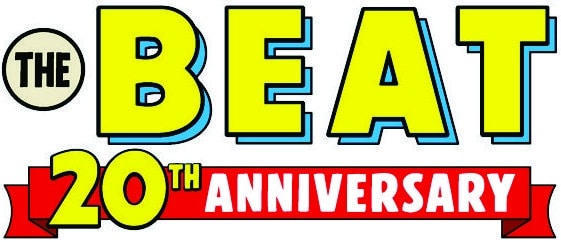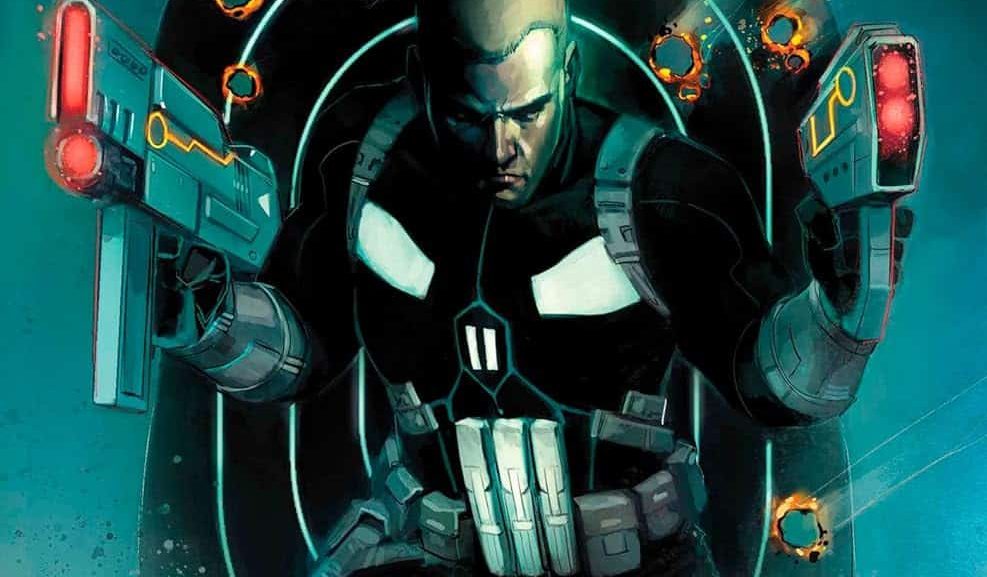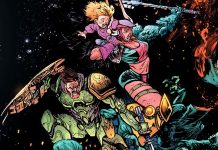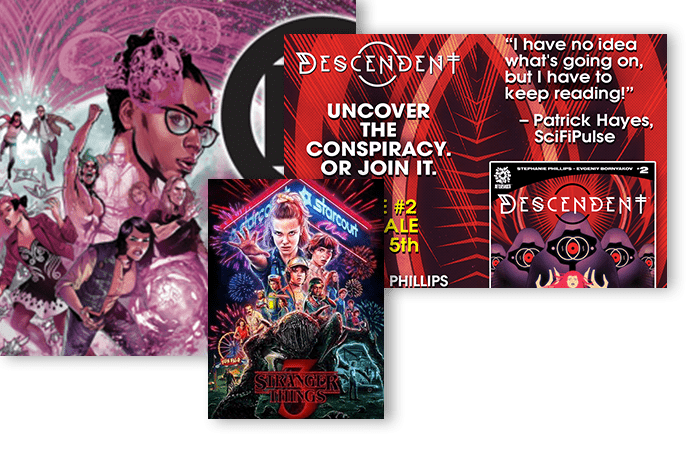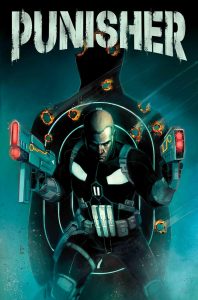
PUNISHER: THE BULLET THAT FOLLOWS
Writer: David Pepose
Artist: Dave Wachter
Colorist: Dan Brown
Publisher: Marvel
Collects: Issues #1-4
Publication Date: May 28, 2024
‘Semi-retired’ and enjoying the homely life, Joe Garrison’s story feels very familiar to your average take on Punisher. When his wife and children are lost in a house bombing the police, unaware of his classified past as a black ops agent, suspect Joe because he’s the missing husband. By every measure then, Joe Garrison kicks off as the new Punisher in the most traditional fashion: he’s an ex-operative known for his lethality, has got a license to kill, and is on a mission to avenge his family. He even has a spooky serious nickname: The Gravedigger of S.H.I.E.L.D.
What I like best then about David Pepose’s Punisher: The Bullet that Follows isn’t so much in its origins, but rather, what it does in the story to try and attempt a fresh take on the Punisher. For starters, Joe Garrison is lot less of an a-hole. He’s not the anti hero hyperviolent MAX portrayal of Punisher so widely beloved by Garth Ennis fans, nor is he weighted down by Frank Castle’s longstanding history. As Pepose himself pitched it, the story does feel isolated in that it’s a John Wick meets The Fugitive origins. Where Joe is fighting against seemingly everybody, all while being framed by a mysterious other… who of course, is later revealed to be about as “Punisher” as it comes in terms of villains.
Where it’s different then lies in that it’s series protagonist is just not Frank Castle. And by that I mean we’ve yet to see how far off the edge Joe Garrison would be willing to go, even though the door is left open for those to find out by the trade’s end. Like many fans, I’ve also read a lot of Ennis’ acclaimed run and I know with the author’s return with GET FURY out in stores right now, it double-so makes it hard to escape the character’s persona from the shadow of Frank Castle.
The character of Frank Castle has become quite troublesome not because of who he represents but of the symbolism appropriated and adopted by right-wing extremist groups. Marvel has tried to disassociate not necessarily from the drama but most definitely of the character. Especially in regards to the original punisher skull.
Yet despite so many claiming similarities this isn’t Frank’s story. Especially so, because The Bullet that Follows seems to be a story more driven by its action sequences; calculated violence and vantage points skillfully drawn by Dave Wachter and colored by Dan Brown. In these moments, you can see how each panel flows with intentionality. Like how some of the action features breaks up with moments of introspection; and how, like Castle before him, Joe Garrison is haunted by the sins of the past and the trauma of guilt.
Perhaps what differentiates Joe best to me is his attitude and his arsenal, which while equally very deadly, does have capacity to disarm. Yes, Joe Garrison kills but it’s a lot less grotesque to some earlier Punisher hyperviolent runs, and instead, seems more of a straight sharpshooter approach with an unafraid toughness debonair to take on a blow or explosion head-on. It’s all very man on a mission and pretty much an agent straight to the point.
When perusing Joe Garrison’s arsenal then we see that he uses a magnetic rail gun, a lethal choice given it can punch a hole through tank but also, has electric disarming capabilities when necessary. There’s also the signature punisher armor also was also kind of unintentional in representing Punisher, more like a uniquely plated chest plate surprisingly resilient yet almost reminiscent of Punisher’s armor. Though the most surprising and my favorite moment in the comic was also Joe’s wielding of… stunchucks. A shocking but engagingly fun comic book weapon.
It’s obvious that Pepose had a runway in mind with this story as a launching point for more in the series. He even had a unique rogue gallery on hand plus plays with styles by issue 3, where the story delves even a bit into horror involving the demons of the past. The Fearmaster making for a truly compelling enemy.
My biggest complaint is that there’s a lot of emotional stillness that I think the series needed. A byproduct of it only running for 4 issues. I think there are moments of lamenting remorse which could have given it a more unique oomph and given Joe a bit more edge had it been given time to explore the emotionality behind it better. I also think the dialogue feels a little on the nose at points because of the shorter run in many ways pushing to move the story forward.
Still, Punisher: The Bullet That Follows is worth a read and a recontextualization of the Punisher, but more importantly, of what this series could bring.
Final verdict: Buy
Read more great reviews from The Beat!
